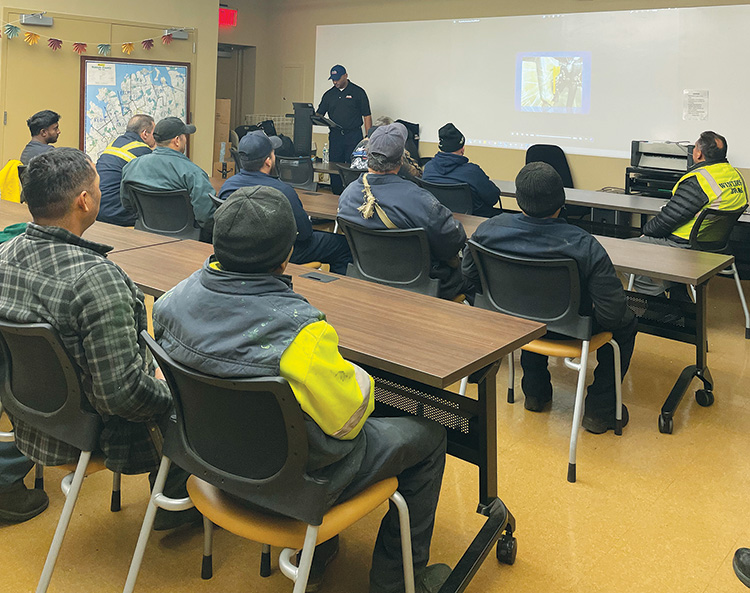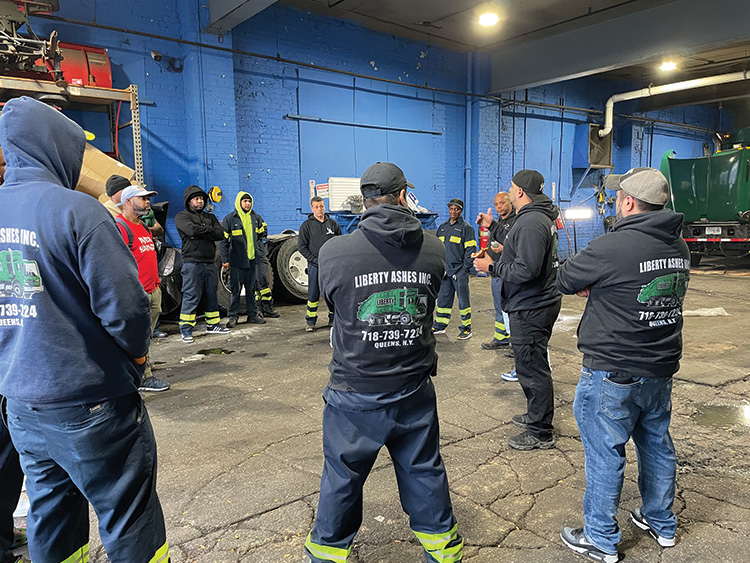Safety training and education is a key component of high-quality safety programs and efforts to reduce collisions, injuries, and claims. Expanding and improving your safety training and education in 2024 to engage workers will likely result in fewer incidents.
By David Biderman
Leaders in the solid waste and recycling industry frequently say that “nothing we do is more important than safety.” But when push comes to shove, companies and sanitation departments often do not provide sufficient or adequate education and training that provides employees with the tools to prevent collisions, injuries, and claims.
Solid waste and recycling employers frequently must make difficult decisions about how to deploy resources. With a new year starting, let me suggest that providing more and better safety education and training is not only a great investment with immediate ROI (return on investment), but it is also the right thing to do. Solid waste collection employees have had one of the highest workplace fatality rates in the U.S. for more than a decade. There are tens of thousands of collisions and injuries annually. Each collision, injury, and claim is an expense, many of which are preventable. These events are not good for the industry’s reputation and make it more difficult to recruit and retain employees.

Photo courtesy of Will Flower.

Photo courtesy of David Biderman.
Developing a Strong Safety Program
Safety education and training in the solid waste industry currently ranges from “here’s the vest, don’t get hurt” to weeks of initial classroom training and ride-a-longs. In my new role as a consultant, I see that many companies and local governments want to improve their safety education and training, but lack the internal resources or expertise to do so. Some provide non-waste-related educational materials to their workers, and then wonder why their drivers and helpers are not engaged in their safety program or their claims are increasing.
A strong safety education and training program in the solid waste industry should include the following components:
- Initial Training—A new employee should receive training on all of the safety hazards associated with the tasks they will be performing. This training should have both classroom and field components, and, ideally, include periodic reviews or tests to make sure that the new employee understands the training.
- Refresher Training—On at least an annual basis, every frontline solid waste employee should receive some sort of training on the key safety hazards associated with their jobs. For example, a helper should be reminded about how to lift properly, the importance of wearing high-visibility clothing, and not using their cell phone while on the job.
- Safety Meetings—Solid waste employers should hold periodic safety meetings, ideally on a monthly basis, to review leading safety hazards, recent incidents, and to remind employees about the importance of working safely every day. These meetings also provide valuable opportunities to listen and respond to workers about their safety concerns.
- Communications—Companies and sanitation departments should be communicating frequently and consistently about the importance of workplace safety, not just at the monthly safety meeting. These communications play a critical role reminding frontline workers about safety issues and hazards. Remember, not every worker attends each monthly safety meeting.
Documenting all these program components is important from both a human resources and OSHA compliance perspective.
Internalize Safety Messaging
Over the past few months, I have spoken at dozens of safety meetings at solid waste companies and sanitation departments. When I participate in these meetings, I focus on three items: (1) informing the attendees they work in the 7th most dangerous job in the U.S.; (2) reminding them of the key safety rules, including staying off their cell phone, wearing a safety belt, and complying with applicable safety rules such as speed limits; and (3) their health and safety is important to their spouses, children, and families.
Although most frontline solid waste collection employees are aware that their job can be dangerous, they are typically amazed that it is on a federal top 10 list. And though they usually know most of the safety rules, very few know the ANSI Z245.1 guideline on when a helper should not be on the riding step. Also, they freely admit not everyone wears a safety belt or stays off their cell phone all the time.
Reminding workers that they need to be safe for their families is a great way to help employees better internalize safety messaging and reduce unsafe behaviors. Pictures and videos are often more powerful than words, and showing photographs of an overturned garbage truck or a truck rear-ending another vehicle is a great way to keep workers paying attention during a safety meeting.
At the End of the Day
Every day in the solid waste industry brings new challenges. A truck breaks down. Heavy rain delays the route. A fire occurs at a recycling facility. The focus on daily operations can distract companies and municipal solid waste agencies from developing robust safety education and training programs that help protect employees from injuries and the communities they serve from harm. It should not. Nothing we do is as important as having a happy and healthy productive employee go home to their family at the end of each day. | WA
David Biderman is the President of Biderman Consulting, LLC in Fairfax, VA, and the former Executive Director of the Solid Waste Association of North America (SWANA). He can be reached at
[email protected].
